Artist Spotlight
Flo untangles her heart through art journaling
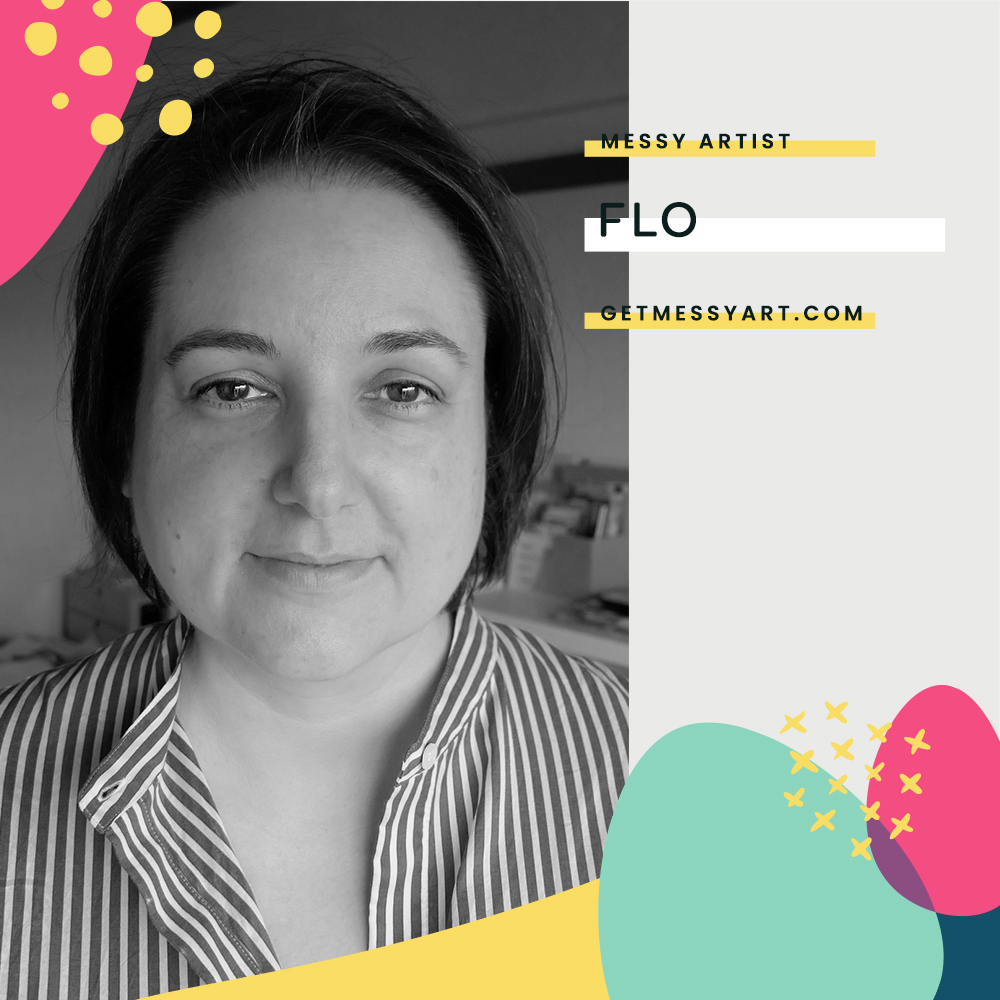
Flo is a cultural anthropologist, art journaler, mixed media explorer, and general people encourager based in Japan. Passionate about visual expression, she is always looking to make more space for art and creativity in her life and has found that art journaling is the perfect medium to let herself overflow.
What is art journaling to you?
A place to flow out of myself.
A place to play.
A place to untangle my heart.
A place of discovery, self and otherwise.
What does community do for your art?
Community supports my creativity in so many ways. It makes me both humbler and bolder, and both soothes and stimulates my artist’s soul.
I love seeing others’ creativity in action and am endlessly inspired to see how others make space for it in their life, how they develop their own specific interests, what light them up.
Community, for me, is also a constant reminder that art is about practice, and that practice can look about a thousand different ways. All valid, all inspiring.
Beyond just my own art practice, community also gives me a chance to celebrate others and that, in and of itself, brings so much to my life.
How do you live a creative life? How do you incorporate journaling into that?
By shifting perspective.
By looking for and cultivating joy and delight.
By celebrating others.
By closely examining the “shoulds” and “supposed tos” and letting go as needed.
All these apply to art journaling as well, and art journaling also is a way to explore these.
What does your creative space look like? Where do you journal?
For the longest time, my creative space was a corner of my dining table, complete with a rolling cart for supplies. There was a lot of shuffling things around, but it worked well enough.
I switched my setup a couple of years ago, in an attempt to test how a different body position and easier access would influence my practice. My creative space is now a corner of my home office.
More specifically it is a standing arting station made from a metal shelving unit topped with a wood board. Most of my supplies fit on the shelves or in the small cart that I keep next to it.
The switch from sitting to standing has been really good for me. It has made starting feel more accessible somehow.
I really enjoy having everything on hand and that I can literally pass through and do a little something while on the way to doing something else.
Do you have creative routines?
Since 2020, my creative practice has very much been structured around the Get Messy hangouts. I guess they have become quite an important aspect of my creative routine.
Other than that, I don’t think I have routines per se as far as art journaling is concerned, but I do have favored processes. I tend to need and want time to chew on an idea or a question before diving into making. The chewing, then the making, is likely my core creative routine.
Apart from that, I tend to do several theme-based projects per year and when I do, I tend to tie them to a specific routine to make them more doable. For example, in 2021, I did 100 days of small abstract collages and paired it with a lunch break practice.
What is your favourite art journal page that you’ve ever made and why?
I am not sure I have one single favorite page, but I am definitely more attached to some.
My favorite pages are those I can look at and feel they reflect the “me” of that specific moment, or feel that I managed to express exactly what I wanted to in a way that makes sense to me.
Breakthrough pages are another favorite: those pages where something clicked for some reason and I got to discover a visual element that is meaningful to me.
What is your biggest barrier to creating? And how do you overcome that hurdle?
Lack of mental space. When I feel overwhelmed by too much life happening, “non-essential” things tend to fall to the wayside. However, I now know that creating is essential and a big part of taking care of myself.
The way I overcome this is by reminding myself that taking even just a few minutes to push paint around will be restorative, even when it feels like it’s too much.
And if it doesn’t feel possible at all, I remind myself that my art journal will be waiting for me, whenever I feel I can join it again.
Have you ever made something you don’t like? What did you do?
Plenty! I am generally not too fussed about it (hum, well, generally).
I may just turn the page and move on.
I may push through.
I may just slap some gesso over it, to blur it out and start over with a poetically fuzzy background.
Mostly I try to pat myself on the back for giving an idea or a technique a go.
Have you ever been through artist block? How did you return to your work?
I think we may be a bit too quick to define something as “artist block”. I wonder if a label that feels so definitive is actually helpful (what do you think?).
I like to think of creativity as something that naturally ebbs and flows, like most things.
If I feel stuck or in a slump (or “blocked”), I tend to go with tried-and-true processes that I know I enjoy, or do something mindless like pushing paint around, playing with repetitive marks, or fussy cutting images -anything familiar and comforting that lets me lose myself in the process.
I also don’t pressure myself into doing anything new or anything specific or anything at all.
I know this is just a phase, as frustrating as it may be, and treat it like so. If anything, I try to treat myself with an added layer of gentleness.
How has Get Messy impacted your creativity?
I thrive on a bit of structure. Get Messy has provided that for me.
I see it as a light, non-obtrusive yet sturdy scaffolding for my creative practice.
By providing both framework and starting point, through time and practice, Get Messy has also helped me clarify my own needs, wants, and likes, as well as explore my relationship with perfectionism (possibly the biggest scam there ever was) and visibility (wanting to be seen versus being scared to be seen).
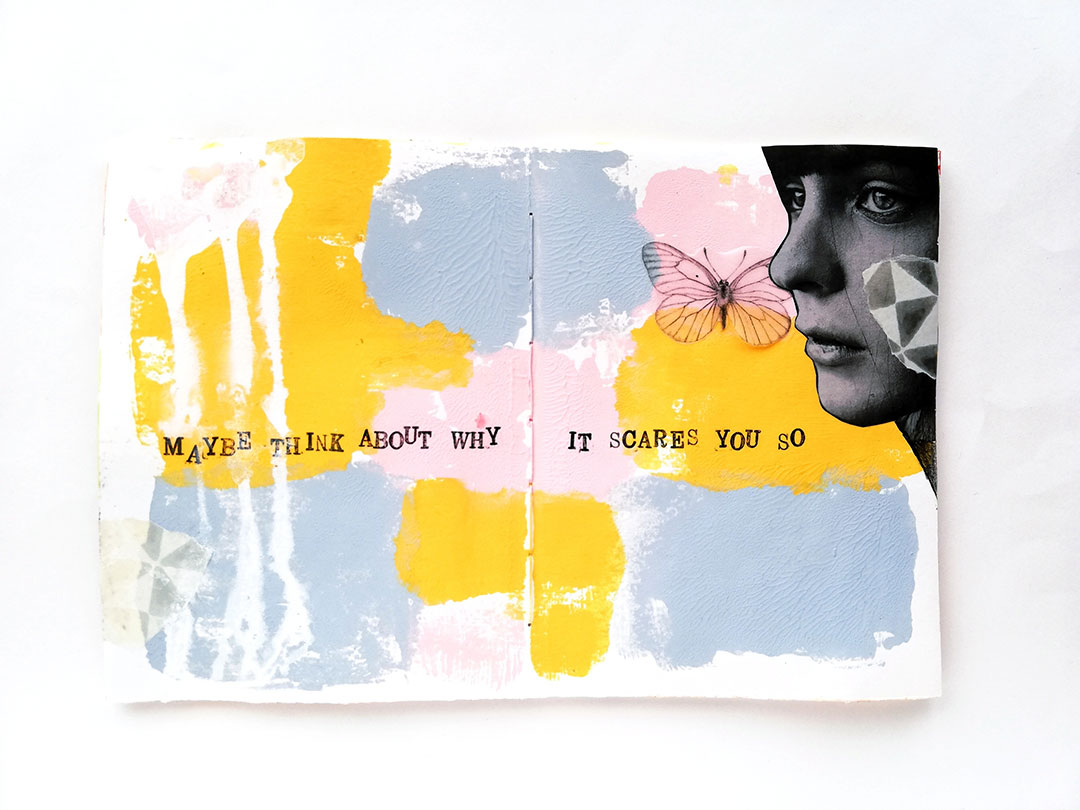
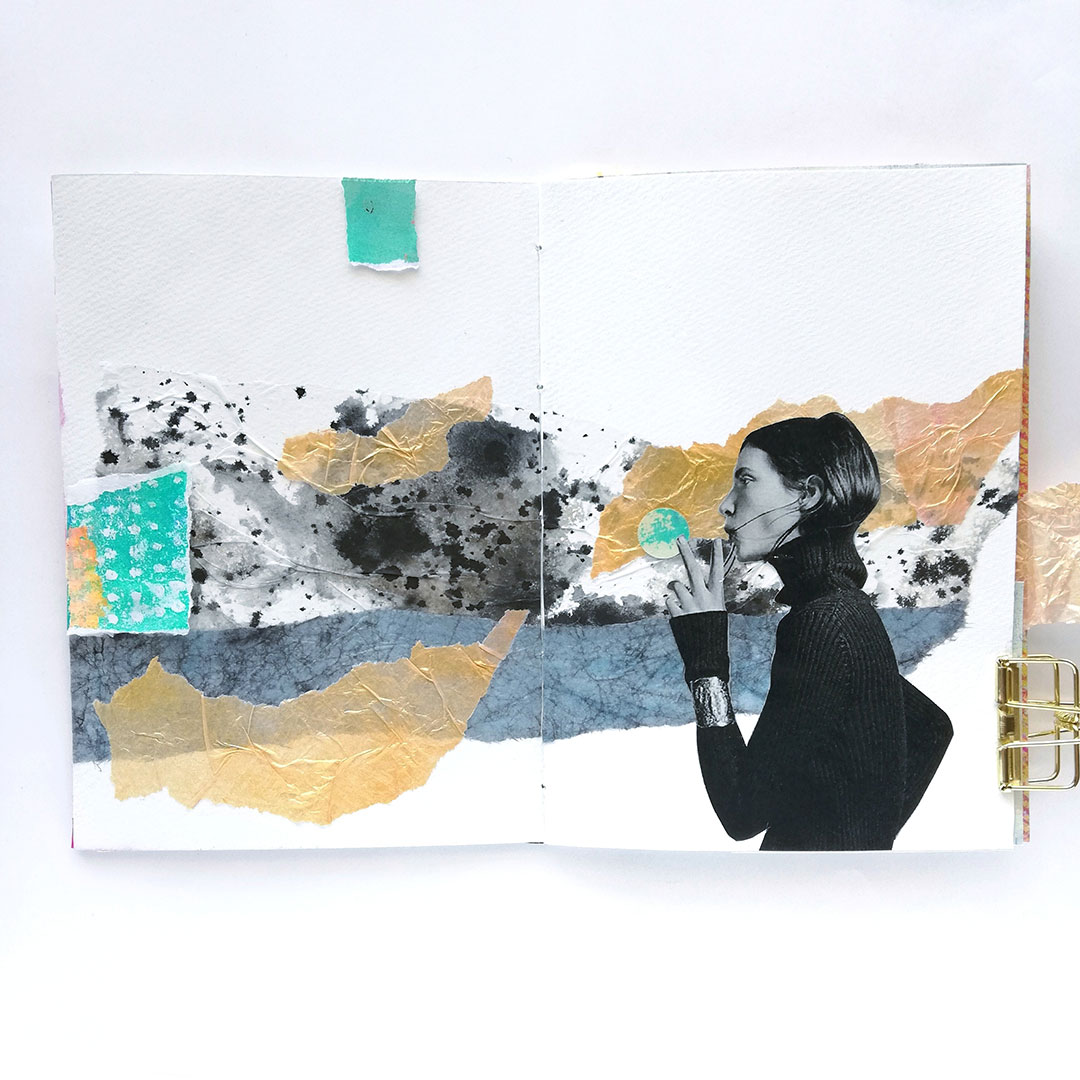
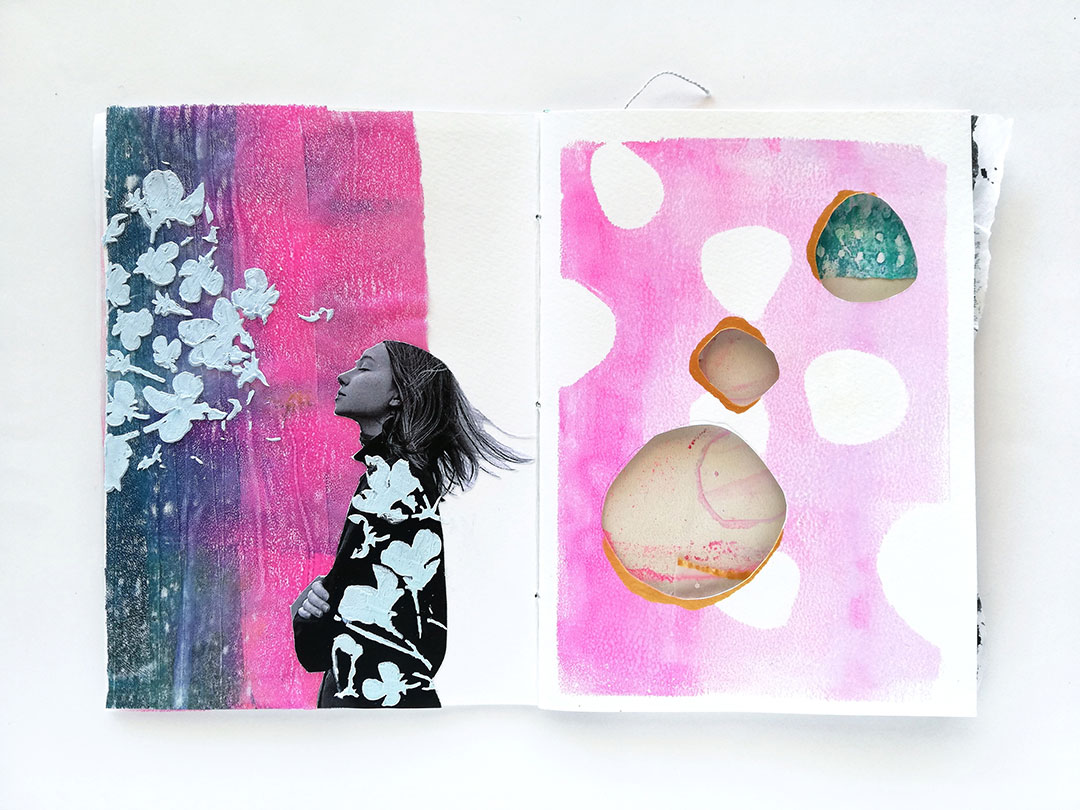
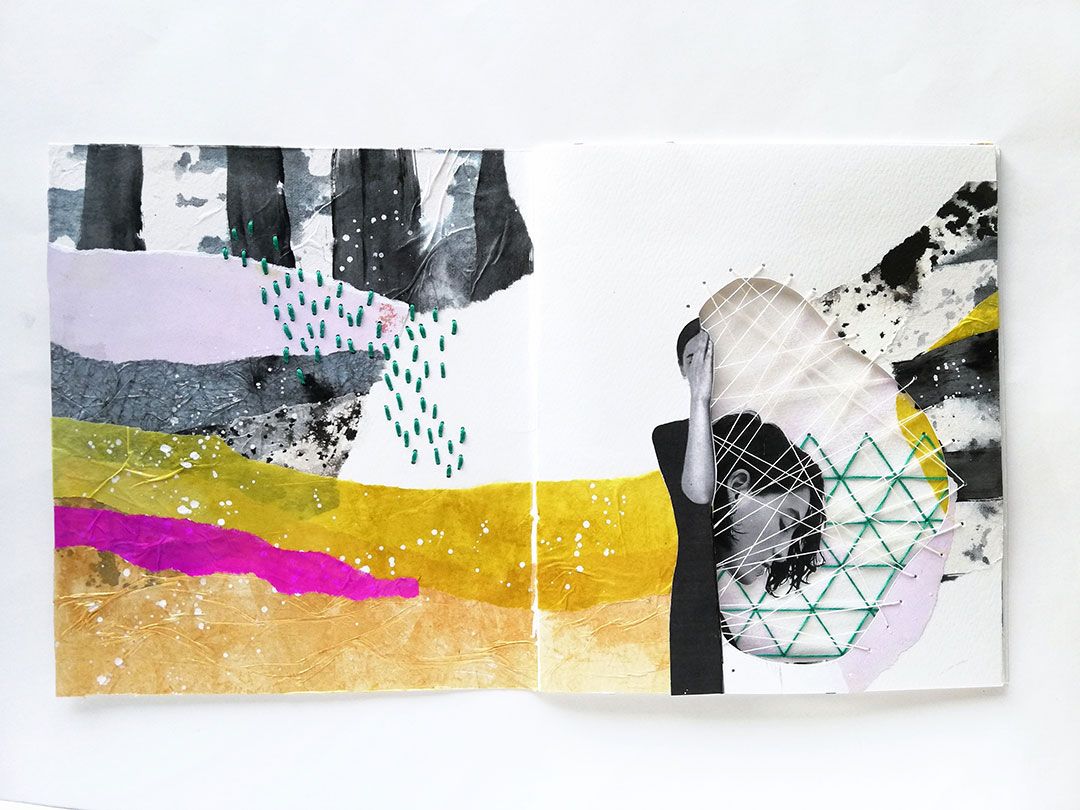
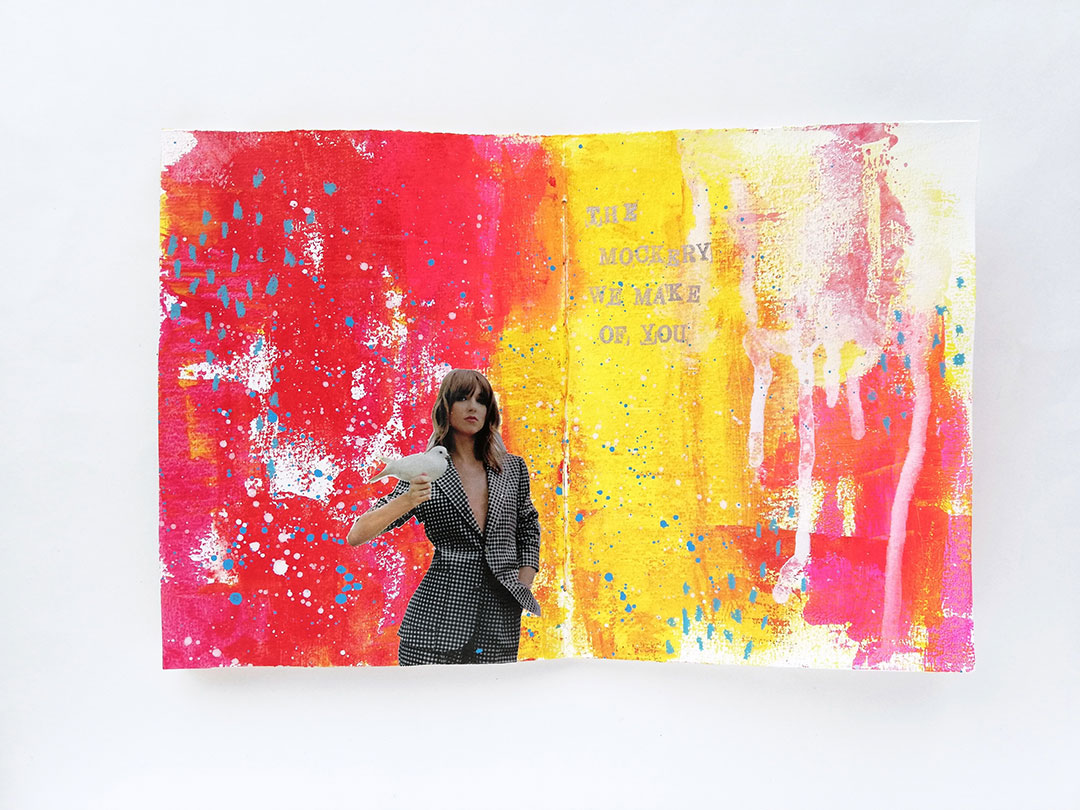
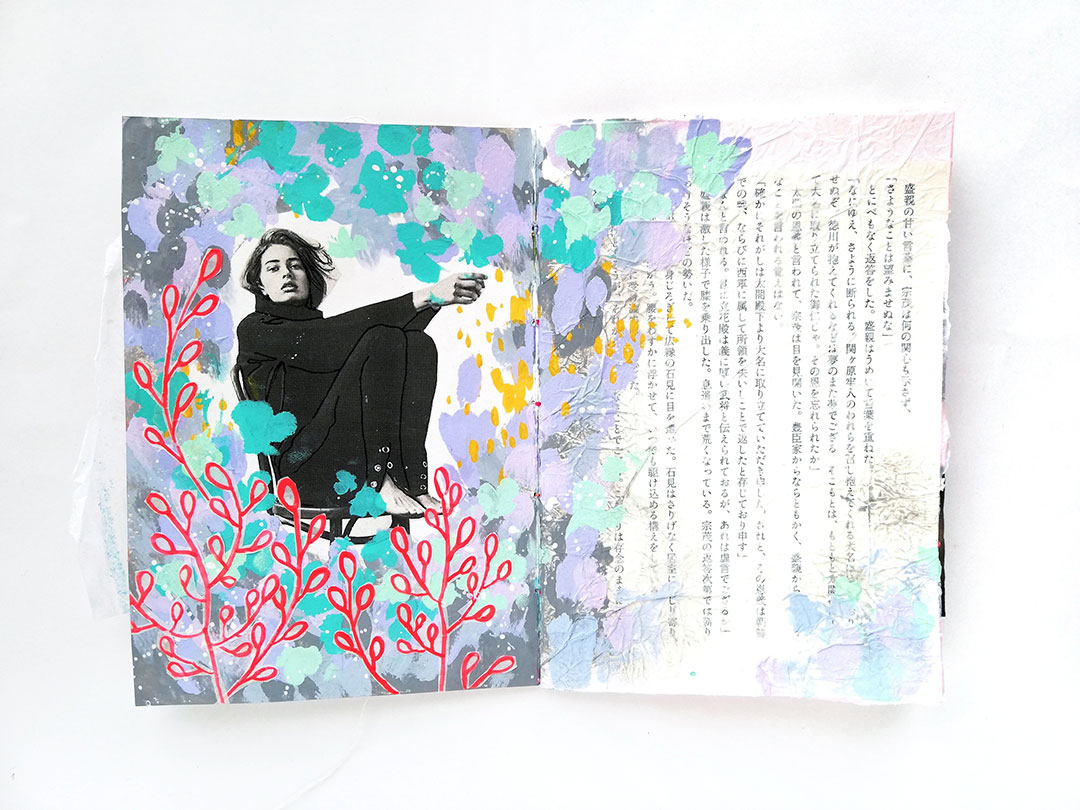
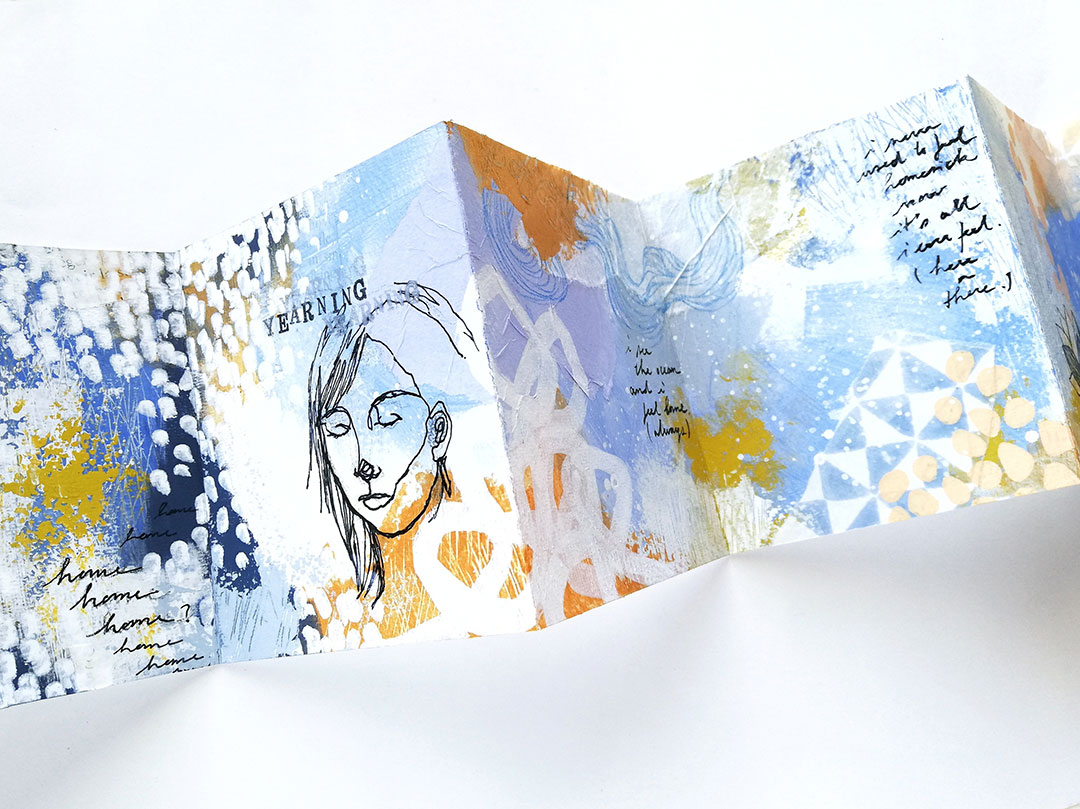
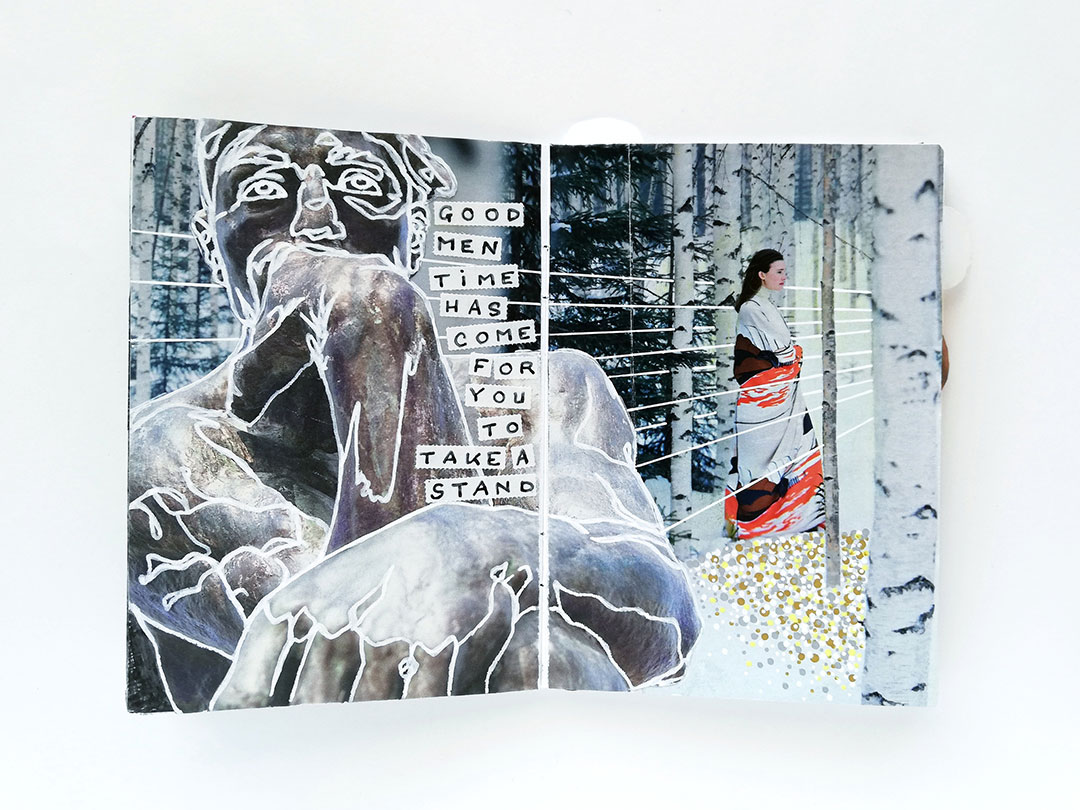
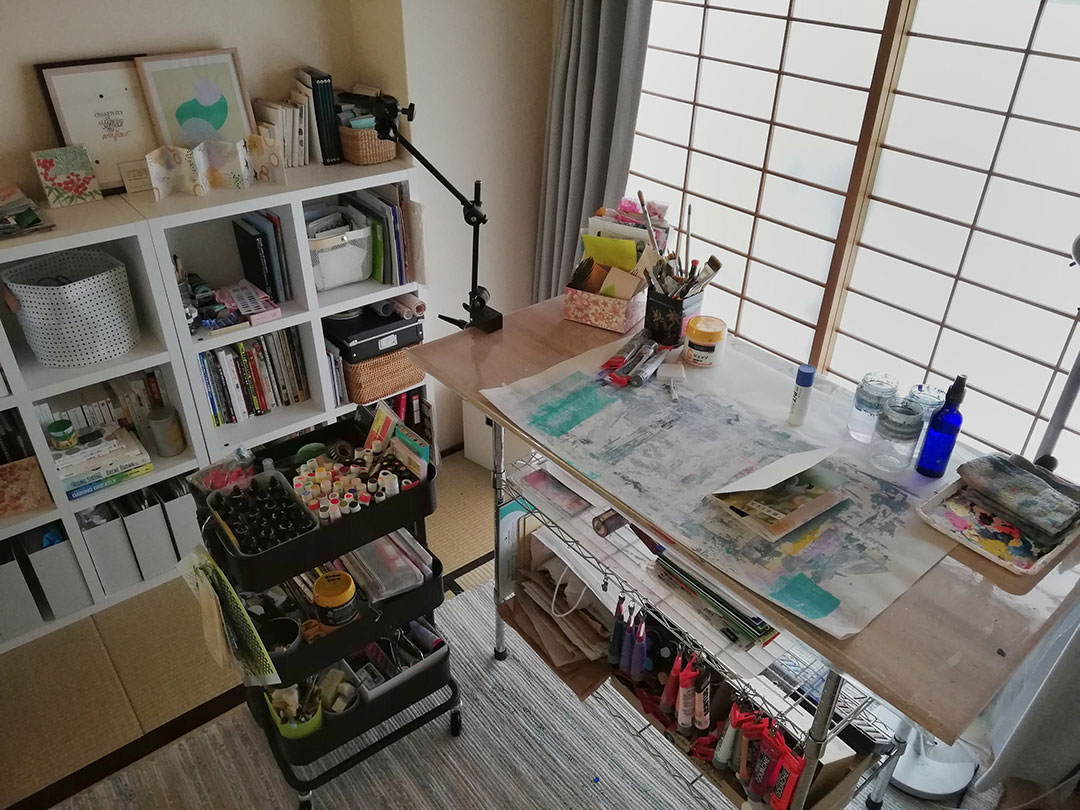
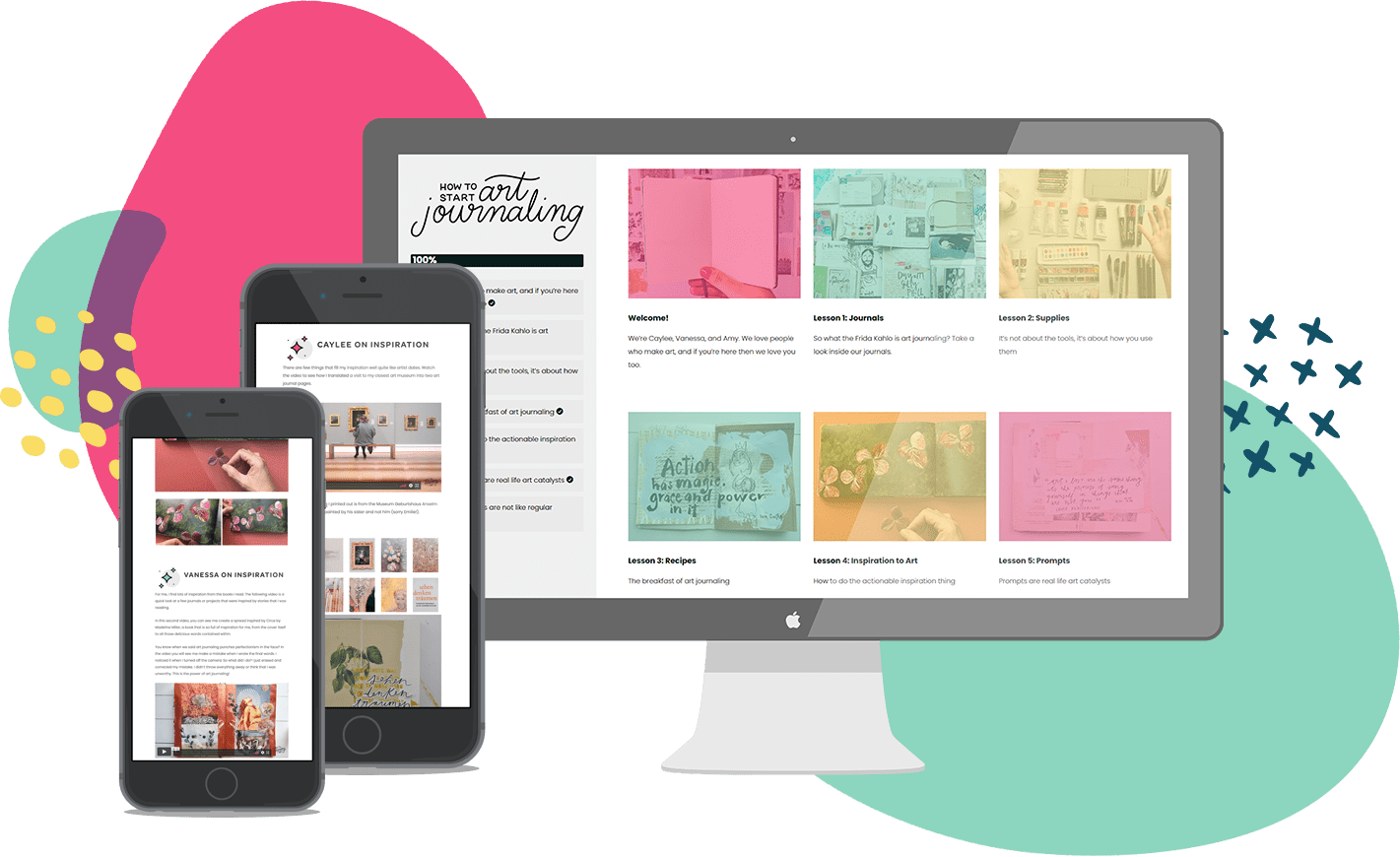
✨ Free class for creatives ✨
In How to Start Art Journaling, we’ll walk you through the art of art journaling, including how to start doing (🙌) and make your very first art journal page (even if you’ve never even opened an art journal before).
What journal do you use?
Most of the time I bind my own journals. They’re nothing fancy: pamphlet stitch for thinner paper, kettle stitch for thick watercolor paper, very often cover-less. I like a small format, anywhere between A6 and A5, as I find it works best with my way of creating. I find that making my own journals allows me more flexibility and generally lowers the pressure that I often feel with store-bought sketchbooks.
What is your one *must have* supply?
Acrylic gouache. I enjoy their texture, vibrancy and versatility.
What do you make when you don’t know what to make?
I often jot down ideas in a dedicated notebook when I don’t have time to make. When I don’t know what to make, I have a peak in there. I may not exactly do what I had originally planned, but it will often spark something. I also sometimes revisit tutorials or techniques I have tried and enjoyed in the past.
What is the most important (non-tool) thing to your creative practice?
Letting go of assumptions. Knowing that perfection is a harmful illusion. Being gentle with myself.
Who are your favourite Messy artists?
In alphabetical order: Chris (@stumblingoverchaos) for her amazing diptychs and creative energy. @favapieces for her moody expressive, abstract pages. Julie (@balzerdesigns) for the breadth of her practice. Melanie (@mixedmediamagpie) for the poetry in her work. Mona (@monaschreibt) for her dynamic compositions. Vanessa (@dansmoncrane) for her imagery and powerful use of symbols. (So many more though.)
What’s the best art advice you’ve ever received?
“Just give it a try”.
Advice to new art journalers:
1) Get curious (aka let go of what you think it should be, embrace what you can make it be).
Get curious about your own creativity. Get to know your creative self (or your artist self, or your art journaling self, whatever title feels right to you), independently from what you think it should look like/be like.
Ask yourself questions about what you like and what you enjoy making (they may be different things).
I think a big part of cultivating a creative practice is letting go of what we think it’s supposed to look like, letting go of what we’re supposed to enjoy, even of beliefs we have about ourselves.
And finding out what actually works and doesn’t work for us.
If you want creativity to be a bigger part of your life, and feel you don’t have enough time/energy/resources (etc.), take some time to find out what you need and what you can actually do within the boundaries of your current circumstances.
2) Start wherever.
If you feel you don’t know where to start, especially if you feel overwhelmed by all the options, just pick one thing and do it.
It may not sound like helpful advice, but the only remedy to not knowing where to start is to actually do something. There is no wrong way or wrong place to start. Nor is there a perfect place to start. Nothing will be “a waste of time”.Whatever you choose to do, you will discover, and more importantly, you will have started, you will have made something.
3) Be gentle with yourself.
Nurture your beginner self. Nurture your experienced self.
Celebrate the making. Celebrate your imperfect attempts at creativity.
Know you are creative, in your own unique ways. Without question.
(And if/when you need an extra dose of gentleness, we’re here for you too).
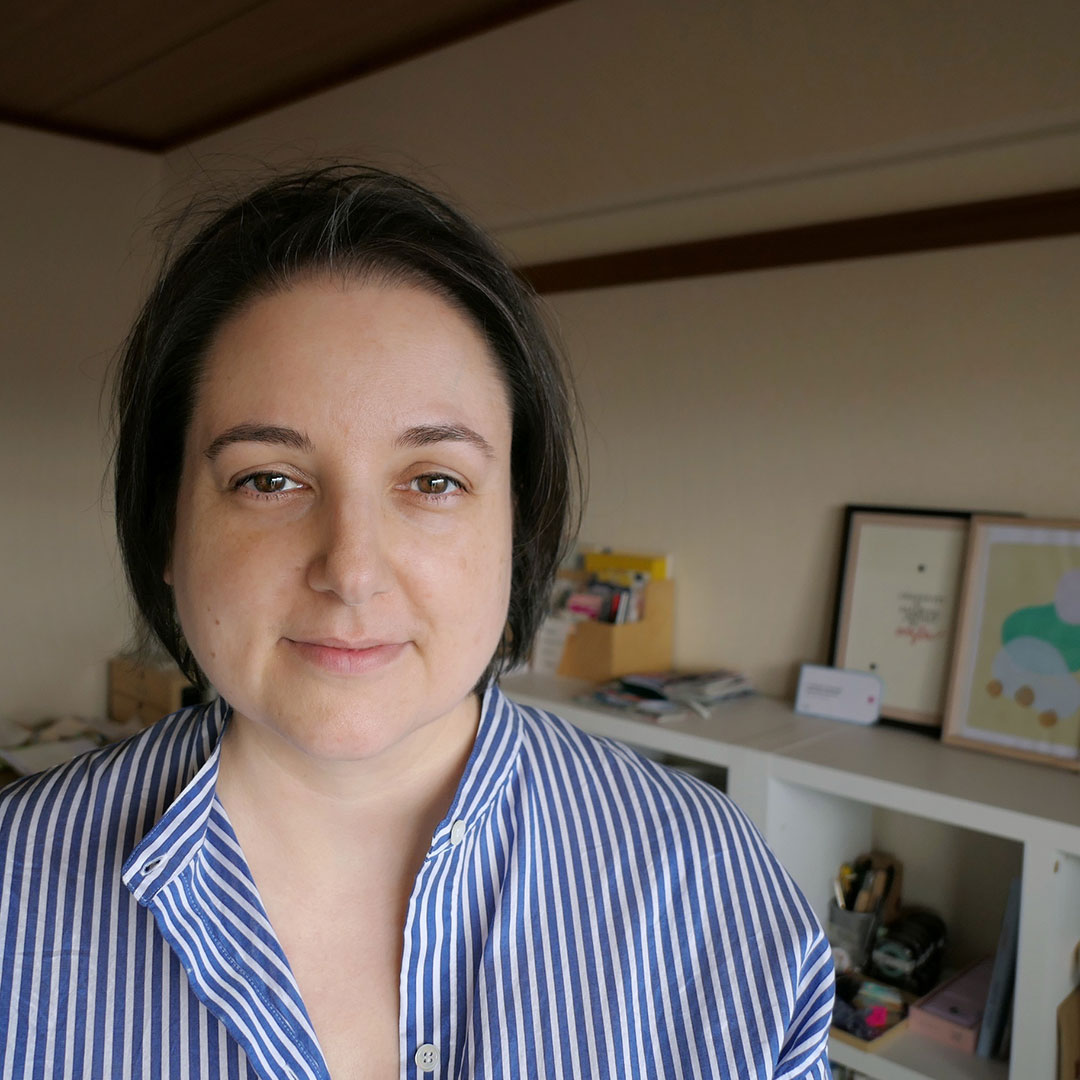
Flo (@Flo_HereThere)
Flo is a cultural anthropologist, art journaler, mixed media explorer, and general people encourager based in Japan. Passionate about visual expression, she is always looking to make more space for art and creativity in her life and has found that art journaling is the perfect medium to let herself overflow.
